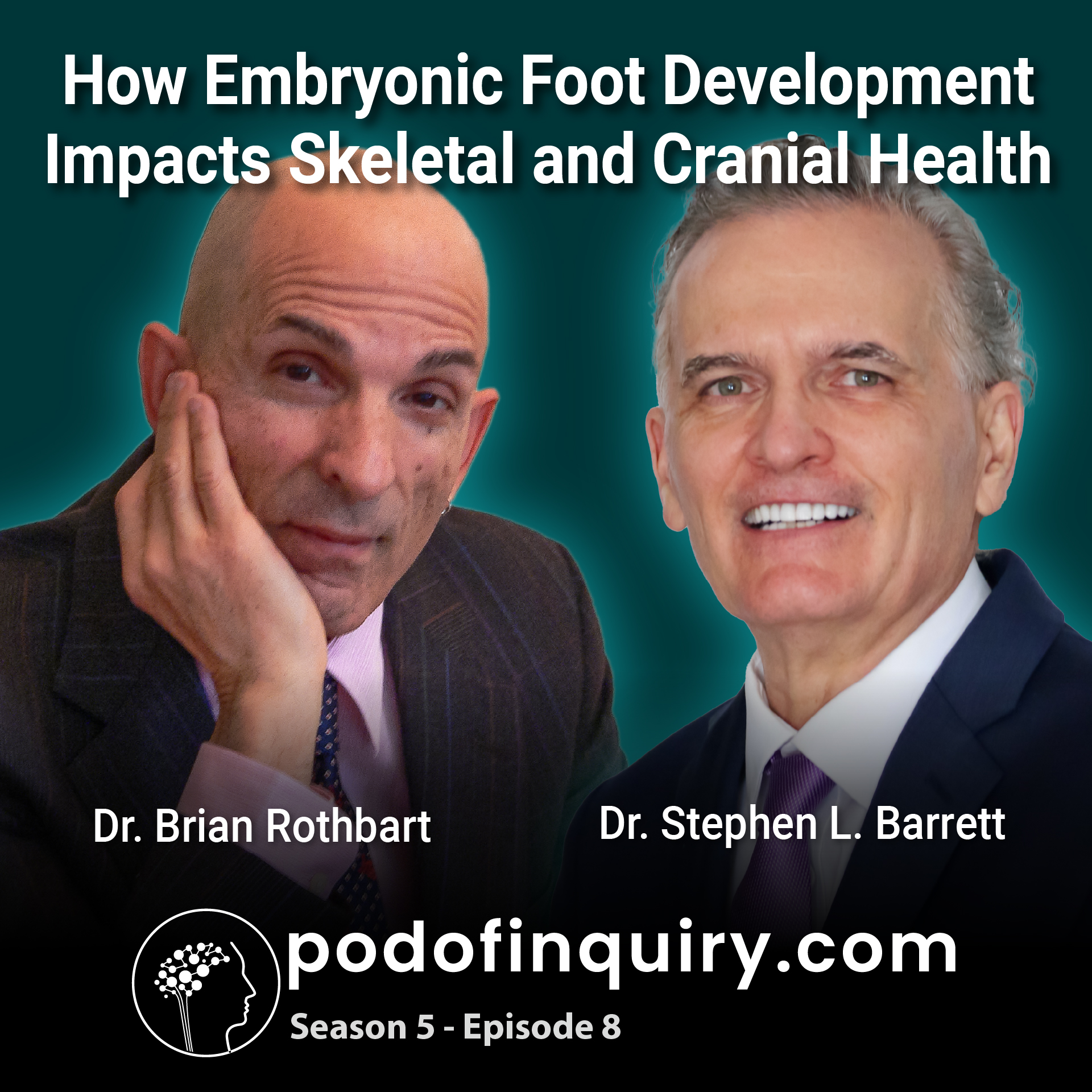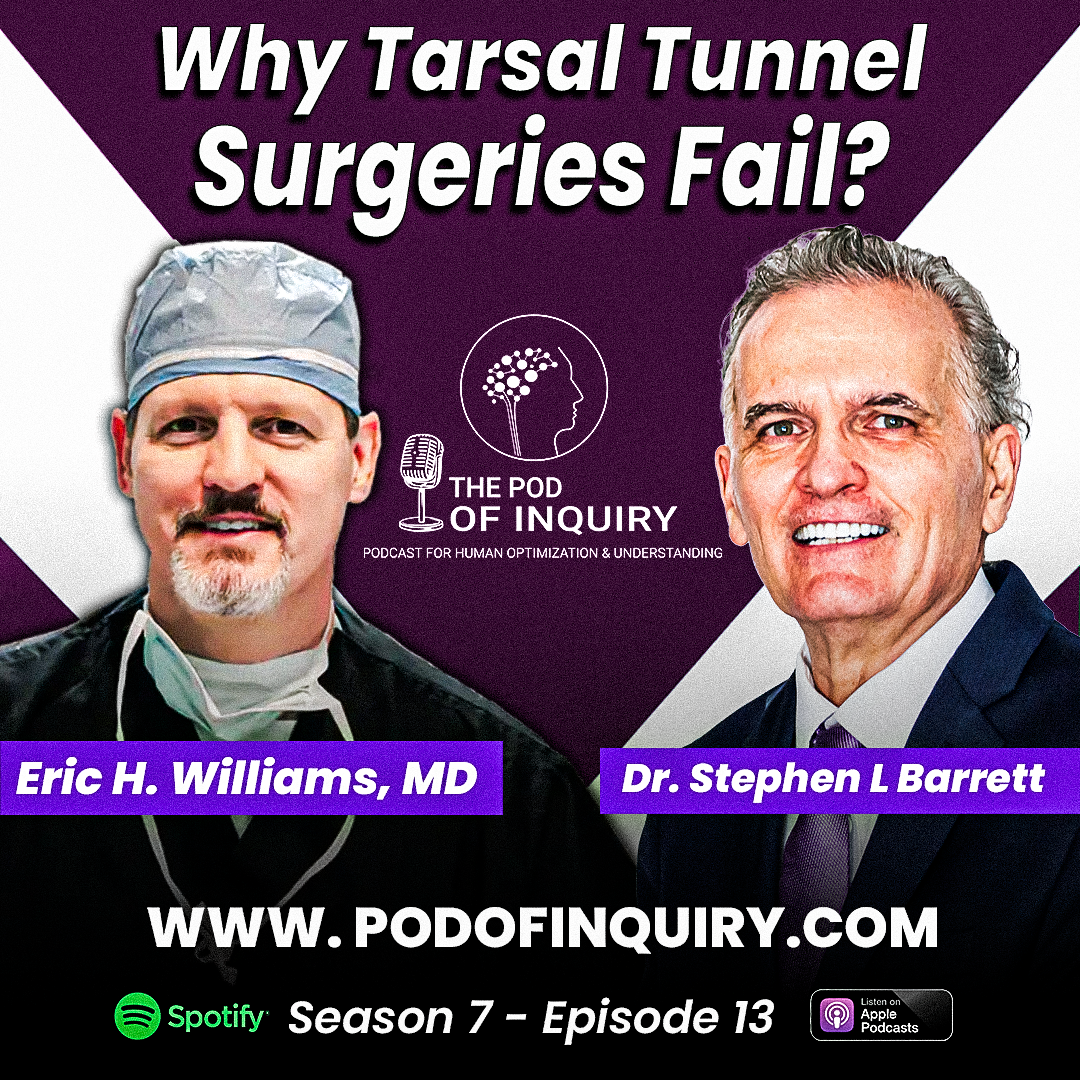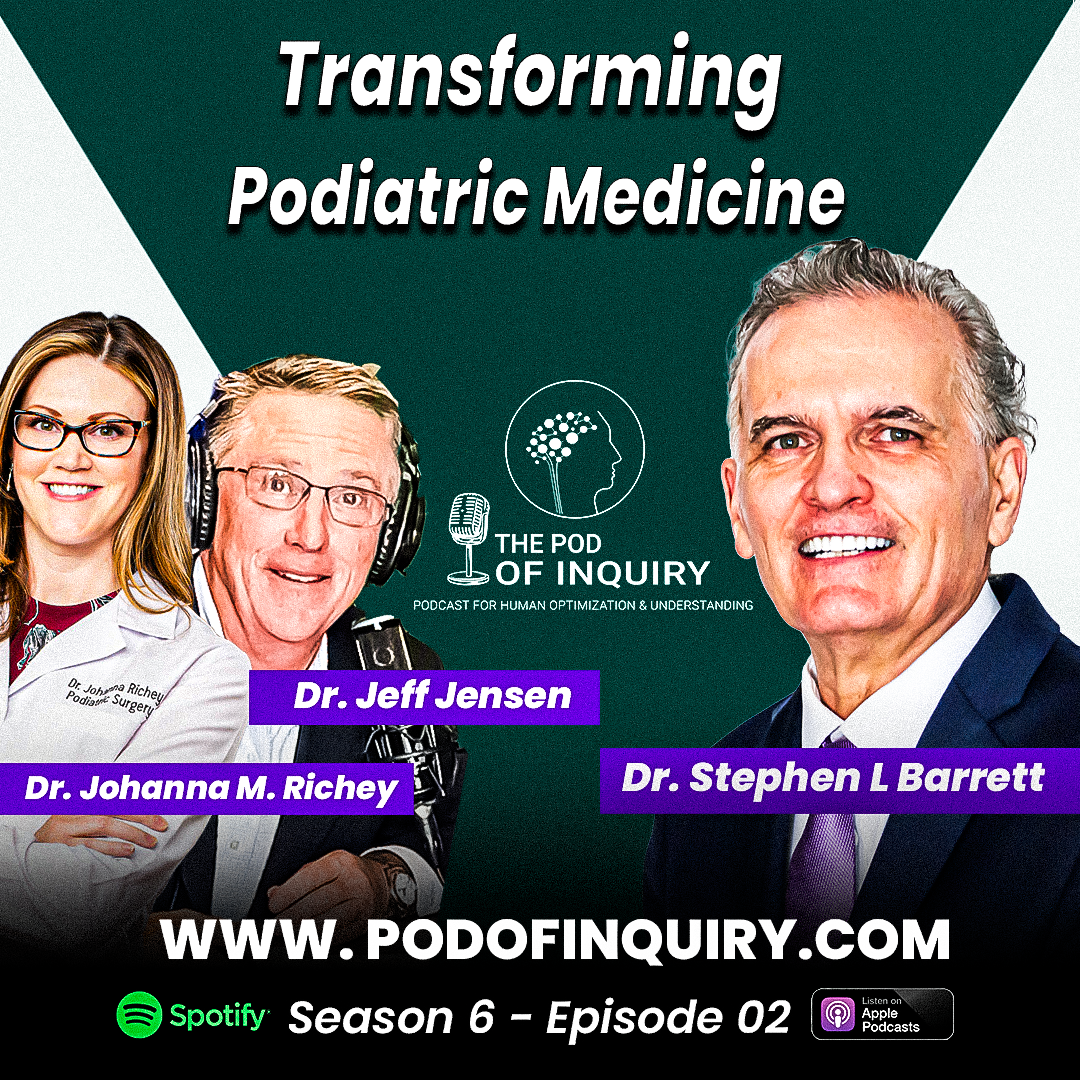We’re thrilled to announce our latest episode featuring renowned expert Dr. Brian Rothbart! In this eye-opening discussion, Dr. Rothbart delves into the fascinating world of embryological foot types and their surprising impact on your skeletal structure and cranial health. Discover how biomechanical aberrations originating in your feet can affect your entire body. Whether you’re a health professional, fitness enthusiast, or simply curious about optimizing your well-being, this episode promises to revolutionize your understanding of body mechanics. Tune in to learn how your embryonic foot development might be the key to unlocking better health from head to toe. Available now on all major podcast platforms – don’t miss this game-changing episode!

Watch The Podcast for Podiatrists
Listen to The Podcast for Podiatrists
Also available on
Show Notes from this episode
- Introduction and Guest Introduction 0:00
- Dr. Barrett introduces his guest, Dr. Brian Rothbart, and explains the significance of his work in biomechanics.
- Dr. Barrett expresses his admiration for Dr. Rothbart's work and its potential to challenge traditional medical dogma.
- Dr. Rothbart thanks Dr. Barrett for the invitation and begins to share his background and journey in the field.
- Dr. Rothbart's Background and Injury 1:58
- Dr. Rothbart shares his educational background, graduating from Podiatry school in 1970 and entering a traditional surgical practice.
- He recounts a significant car accident in 1991 that led to a neck injury and subsequent chronic pain.
- Despite multiple treatments, including surgery, Dr. Rothbart's condition worsened, leading him to seek alternative methods.
- He describes his 10-year journey of research, culminating in the discovery of two previously unrecognized foot structures that impact the entire body.
- Embryology and Foot Development 3:58
- Dr. Barrett and Dr. Rothbart discuss the importance of embryology in understanding foot biomechanics.
- Dr. Rothbart explains the development of the foot from fertilization to birth, highlighting the torsional changes in the foot.
- He describes the structural changes in the foot, including the torsional unwinding of the bones and cartilages.
- Dr. Rothbart emphasizes the significance of these embryological findings in understanding foot types and their impact on the body.
- Foot Types and Proprioceptive Patterns 15:29
- Dr. Rothbart explains the concept of "plantar grade" and "primus metatarsus supinatus" foot types.
- He describes the differences in proprioceptive patterns between these foot types and their impact on posture and gait.
- Dr. Rothbart illustrates how these foot types affect the cerebellum's interpretation of spatial information.
- He discusses the clinical implications of these foot types in treating chronic pain and postural issues.
- Clinical Applications and Case Studies 33:46
- Dr. Rothbart shares case studies demonstrating the effectiveness of his proprioceptive insoles in treating chronic pain.
- He describes the immediate changes in posture and pain relief observed in patients using his insoles.
- Dr. Rothbart highlights the importance of correcting the medial column supinatus to achieve optimal foot function.
- He emphasizes the need for precise measurement and customization of insoles to address individual foot structures.
- Challenges and Resistance in the Medical Community 34:24
- Dr. Rothbart discusses the resistance and pushback he has faced from the medical community, including losing his license in Washington state.
- He explains the challenges of getting his research recognized and the lack of interest in training new practitioners.
- Dr. Rothbart expresses his hope for future researchers to take up his work and expand on it.
- Dr. Barrett and Dr. Rothbart discuss the broader implications of this work in challenging traditional medical paradigms.
- Impact on Cranial Bones and Intracranial Pressure 34:40
- Dr. Rothbart presents research on the impact of his insoles on cranial bone position and intracranial pressure.
- He describes the significant changes in cranial bone alignment observed in patients using his insoles.
- Dr. Rothbart explains the implications of these changes on brain function and overall health.
- He contrasts the effects of his insoles with those of traditional orthotics, which can exacerbate cranial bone distortions.
- Training and Future Directions 50:14
- Dr. Barrett and Dr. Rothbart discuss the need for training in the use of proprioceptive insoles.
- Dr. Rothbart offers to train interested practitioners and emphasizes the importance of proper technique.
- They discuss the potential for future research and the need for more recognition of this work.
- Dr. Barrett expresses his support for Dr. Rothbart's work and his hope for its wider acceptance in the medical community.
- Conclusion and Final Thoughts 58:23
- Dr. Barrett thanks Dr. Rothbart for sharing his insights and experiences.
- Dr. Rothbart reiterates the importance of his work and the need for continued research and training.
- They discuss the broader implications of this work in improving patient care and challenging traditional medical dogma.




